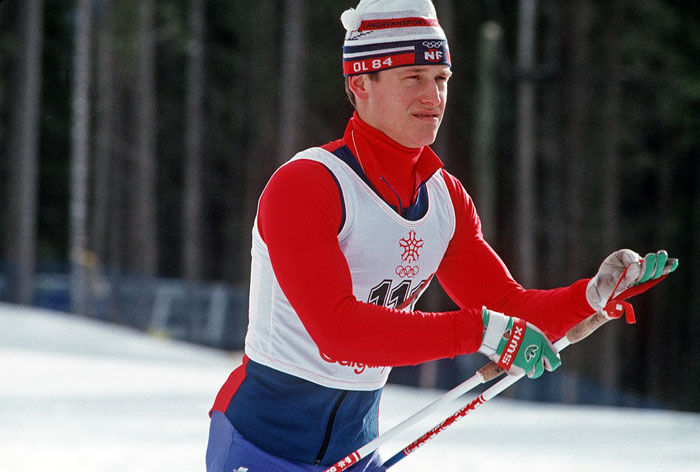There have been large advances in the sport of cross-country skiing, particularly with equipment design. In the 1980's when the freestyle skating style came to prominence, the equipment had to be adjusted to cater to the change in technique, now there is quite distinct equipment for cross-country skiing depending on the technique being utilized.
 cross-country skier at the Calgary Olympics
cross-country skier at the Calgary OlympicsTechnological Advances with Skiing Equipment
The skis used in cross country are lighter and narrower than used for downhill. There is also a difference between the skis used for classical style and freestyle skating technique. Classical skis are longer than freestyle skis. For men, classical skis are typically 205-210cm compared to 190-195cm for freestyle). For women, classical skis are typically 195-200cm compared to 180-185cm for freestyle).
The shape of the skis also differ. Classical skis have their tips lower in the snow and are designed with more pronounced tips. The freestyle ski has a slightly higher camber (bow) than a classical ski.
The grippiness of the underside of the skis also differ. Classical skis are waxed to make them tackier, while the skis used for freestyle events are more slipperier.
The composition of the ski poles has changed over time. Manufacturers first experimented with the use of graphite and carbon fiber to make poles lighter and easier to maneuver. Changes to the composition of the skis also have resulted in thinner and lighter skis. With less drag skiers are able to go faster with more control.


 Current Events
Current Events